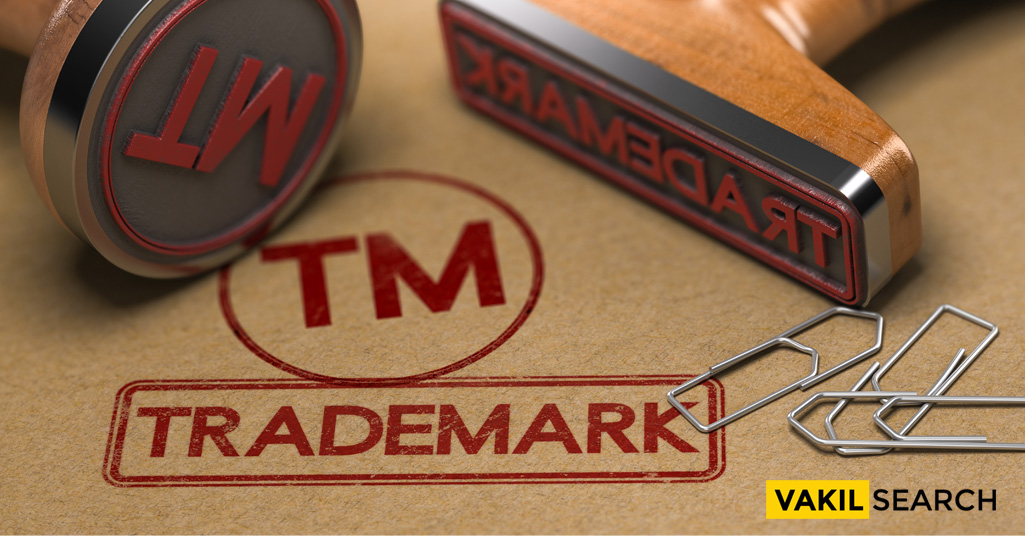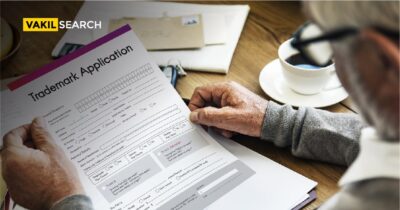A person or the Trade Mark Registrar may object to registration during registration. Read this article about trademark objection in India.
What Is a Reply for Objected Trademark, and Why Is It Important?
The office that receives your trademark application will look over your mark to see if it could be confused with another already registered mark or other marks already used in the market. Suppose they find a legitimate reason for why your mark is not similar to the other marks. In that case, they will issue you a notice for objected trademark in response. This is the very first step in the trademark opposition process.
If your mark does not receive a notice of opposition, you have a good chance of getting your mark registered. The trademark examiners office will not oppose your mark unless there is a good reason for doing so. Trademark rights are usually protected for ten years once they are registered. To get your mark protected for the full ten years, you must file a formal trademark renewal application. When applying for a trademark, you must provide a detailed explanation of why your mark is not similar to the other marks that are opposed. This is where your ‘objection reply’ comes in.
How to Write an Objection Reply for an Indian Trademark?
It will be up to you to explain why your mark differs from the other marks. Responding to the trademark examiner’s objections is called an ‘objection reply’. The trademark examiner’s response to your mark should help you explain why your mark isn’t similar to the opposition. Describe the goods and services your trademark relates to. Trademark examiners typically ask for responses in a specific format.
Trademark Registration Process: Examination / Objection
- Stage 1: Filing a trademark application
- Stage 2: Review of the application / Formality check / Vienna codification
- Stage 3: Trademark examination / Opposition / Hearing
- Stage 4: Opposition / Hearing / Publication in the trademark journal
- Stage 5: Registration of the trademark.
Trademark Objection
The second stage of trademark registration is trademark opposition. The registrar of trademarks will examine all trademark applications.
Trademark Examination Report
When the registry examines the application, it makes an examination report and decides whether the application is accepted or not. If accepted, the registry advertises the trademark. Observations in the examination report will be communicated to the applicant/trademark agent for a reply.
An objection must be stated in the trademark examination report. The applicant is required to file his reply within 30 days of receiving the examination report. This examination report is generally forwarded to the trademark agent for action. The applicant will then have 30 days to respond to the objection. The registrar will accept the application if the reply to the examination report is satisfactory and will publish the same in the trademark journal.
Reasons for Objections
Listed below are the major reasons why the Registrar of Trademarks objected to the application:
- If the trademark doesn’t have a distinctive feature or can’t differentiate between products
- There is a similarity between the trademark application and the trademark already registered.
Reasons for Objections – Explained
There Are Two Main Reasons for Refusing TM Applications:
- Absolute grounds of refusal: Section 9(1) to (3) of the Trade Marks Act, 1999:
According to Section 9(1), these trademarks cannot be registered:
- Lacking any distinctive character, that is, are incapable of distinguishing the goods and services of one person from those of another
- These are marks or indications that are exclusively used for the purpose of indicating the type, quality, quantity, intended purpose, values, geographical origin, the time at which the goods or services were manufactured or rendered, or other characteristics of the goods or services
- Those exclusive to marks or indications that have become customary in the current language or in the bonafide and established practice of the trade.
- In Section 9(2), a mark cannot be registered as a trademark if
- Deceives the public or causes confusion
- Contains or reveals any matter likely to hurt the religious sensibilities of any class or section of Indian citizens
- It contains scandalous or obscene material
- The Emblems and Names (Prevention of Improper Use) Act, 1950 prohibits its use.
- In accordance with Section 9(3), no mark shall be registered as a trademark if it consists of only:
- The shape of goods is a result of their nature
- The shape of goods necessary to produce a technical result
- The shape that gives the goods their substantial value.
| Explanation: Under this section, the nature of goods or services in relation to which the trademark is used or proposed to be used shall not be grounds for refusing registration. |
- Relative grounds of refusal: The Trade Marks Act, 1999 lists the relative grounds for refusal of registration in section 11. The Act stipulates that where there is a likelihood of confusion on the part of the public due to the identity with an earlier trademark or similarity of goods or services, the trademark may not be registered. In other words, a trademark that is similar to one that exists in the Trademark Register shall not be registered. ‘An earlier trade mark’ refers to a registered trademark or application with a date of application earlier than the trademark in question.
Requirements to Reply Objected Trademark
- Reply within 30 Days: The applicant must file a reply within 30 days of the objection. The application will be declared abandoned if the reply is not filed within 30 days of the report.
- Extension of Time for Reply beyond 30 days: Form TM-M with the requirements may be used to request an extension of time for filing a reply.
Documents Required
It is required to submit a formal response to the examination report with detailed clarifications as to why the application should be accepted. The following documents are required.
- The legal power of attorney
- Response to an examination report
- The evidence of trademark use in commercial activities includes invoices, letterheads, communications, visiting cards, screenshots of websites, brochures, and other evidence of trademarks.
How to File a Reply to Objected Trademark?
- Trademark Objection Response: Objected is the application’s status when the registrar believes the application is liable for objection. Upon receiving the examination report, the trademark agent will be informed of the reason for the objection. The applicant has 30 days to reply to the same.
- Analyse the examination report: The first step is to analyse the examination report and determine the reason for the objection.
- Draft reply to Objection: The next step is to prepare an objection reply, including proper response to the objection raised, supporting law and judgments, and other supporting documents and evidence that validates the response.
- Timelines for reply: The reply to the objection must be filed with supporting documents within 30 days of receiving the examination report.
- If the reply is accepted: If the response is accepted, the application will be processed further for registration and publication in the trademark journal.
- If it is not accepted:The trademark agent will be notified when the matter is scheduled for a hearing if the registry does not accept it.
Timelines for Filing Reply to Examination Report
A reply and supporting documents have to be filed within 30 days of receiving the report. The reply to the trademark examination report should be written with legal expertise, referencing cases decided on similar matters and decisions rendered by tribunals / Courts / International bodies.
Extension of Time to File Objection Reply
In the absence of a reply within 30 days of the report, the application will be declared abandoned. The applicant can apply electronically through the trademark agent for the extension of time by submitting TM-M to the registrar with a valid reason for the delay. A new Power of Attorney is also necessary if the reply to the examination report is to be filed by a different trademark agent. The objection reply then needs to be drafted.
Trademark Objection Status
The trademark status on the Indian Trademark Registry website is labeled as “Objected” when the Registrar/Examiner raises objections in the Examination Report. These objections typically arise under Sections 9 and 11 of the Trade Marks Act.
Section 9 objections occur when the Registrar/Examiner deems the trademark to be descriptive, generic, laudatory, or indicative of the quality or nature of goods. To overcome this objection, it is necessary to demonstrate that the trademark is inherently distinctive. Alternatively, the Section 9 objection can be addressed if the trademark has acquired distinctiveness through extensive use. This requires submitting a user affidavit and compelling evidence to establish distinctiveness.
Section 11 objections are raised when there is an identical or similar trademark for identical or similar goods/services already registered in the Trade Mark Registry. In such cases, the Registrar/Examiner issues a Search Report with conflicting marks listed.
Upon receiving an objection, it is mandated to file a response within one month from the date of receiving the Examination Report. The Trade Mark Registry typically uploads the Examination Report online without specific intimation to the applicant or their agent. Therefore, it is advisable to submit the response promptly upon discovering the report online or upon receiving it directly from the Trade Mark Registry.
Failure to respond within the stipulated timeframe may result in the abandonment of the trademark application due to a lack of prosecution. Effectively arguing against the objections is crucial in the response, as it determines whether the Registrar/Examiner accepts the trademark or schedules a hearing for in-person arguments. Proper representation is key, and in many cases, objections can be overcome with a well-presented response before the Registrar.
Consequences of Non-Filing of Reply
Responding to trademark oppositions on time is a crucial step in trademark registration. The trademark application shall be marked as abandoned if the reply to the examination report is not filed within 30 days of notice / or by the extended time. If the application has been marked as abandoned, the applicant must reapply. However, make sure to get legal advice from the experts.
Dealing With Objected Trademark
- Opportunity for Detailed Submission: It eliminates the chances of a trademark being rejected right away because the applicant is heard.
- Acceptance chances increase with a perfect reply: The trademark is most likely to become registered if the objection reply is filed perfectly.
Frequently Asked Questions
What are the common reasons for a trademark objection, and how can they be addressed in the reply?
Common reasons for trademark objections include the use of incorrect trademark forms, existence of similar trademarks, lack of distinctive character, and deceptive marks. These objections can be addressed in the reply by providing valid evidence and explanations to justify the trademark.
Is there a specific format or template for drafting a reply to a trademark objection notice?
There is no specific format or template for drafting a reply to a trademark objection notice. However, the reply should include relevant information and documents to counter the objections raised by the Trademark Office.
What information and documents should be included in the reply to effectively counter the objections raised by the Trademark Office?
The reply should include relevant evidence, such as documents, affidavits, and expert opinions, to justify the trademark and counter the objections raised by the Trademark Office.
Is there a time frame within which a reply to a trademark objection must be submitted, and are there consequences for delays?
Yes, there is a time frame within which a reply to a trademark objection must be submitted, which is usually one month from the date of receipt of the objection notice. Delays in submitting the reply can result in the abandonment of the trademark application.
Can legal representation or assistance be sought when preparing and submitting a reply to a trademark objection?
Yes, legal representation or assistance must be sought when preparing and submitting a reply to a trademark objection to ensure compliance with the relevant laws and regulations.
How does the acceptance or rejection of a reply impact the overall trademark registration process?
The acceptance or rejection of a reply can impact the overall trademark registration process. If the reply is accepted, the trademark application can proceed to the next stage. If the reply is rejected, the applicant may have to file an appeal or reapply for registration
Are there options available if the initial reply does not resolve the objections raised by the Trademark Office?
If the initial reply does not resolve the objections raised by the Trademark Office, the applicant can file an appeal or reapply for registration.
In case of multiple objections, how should the reply be structured to address each objection systematically?
The reply should be structured to address each objection systematically by providing relevant evidence and explanations for each objection raised by the Trademark Office.










